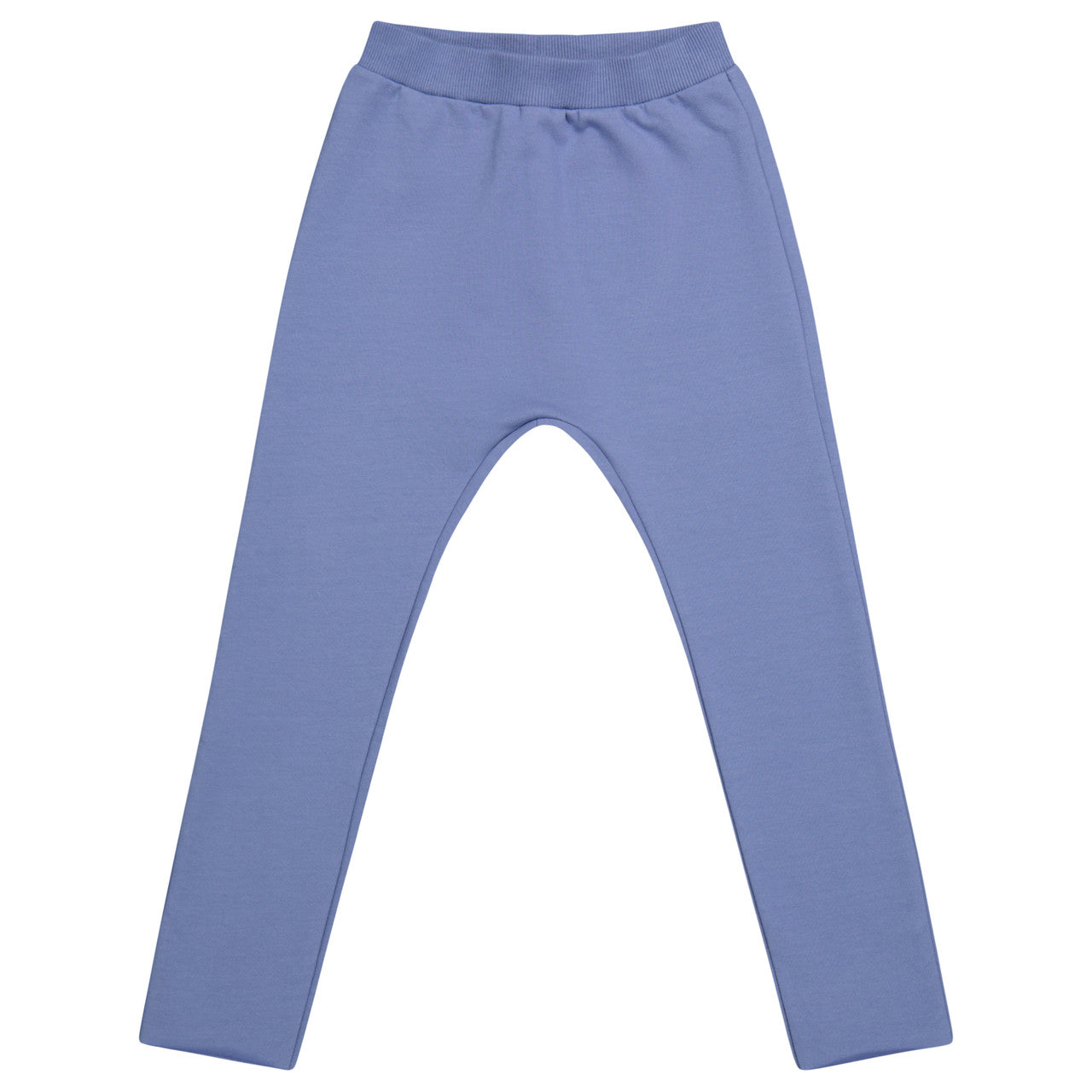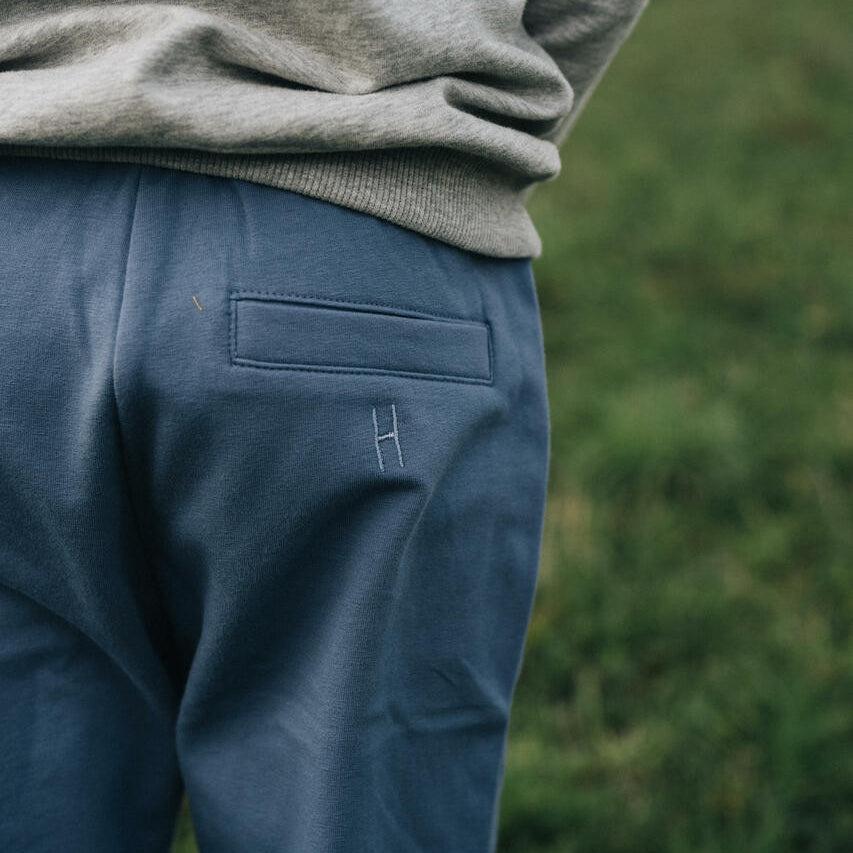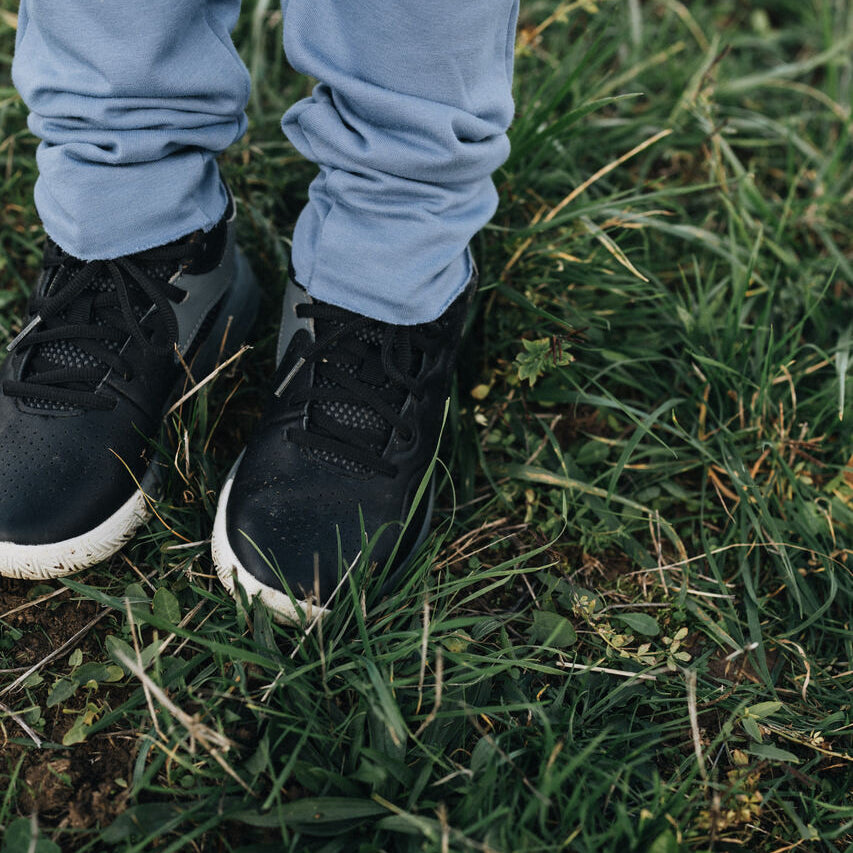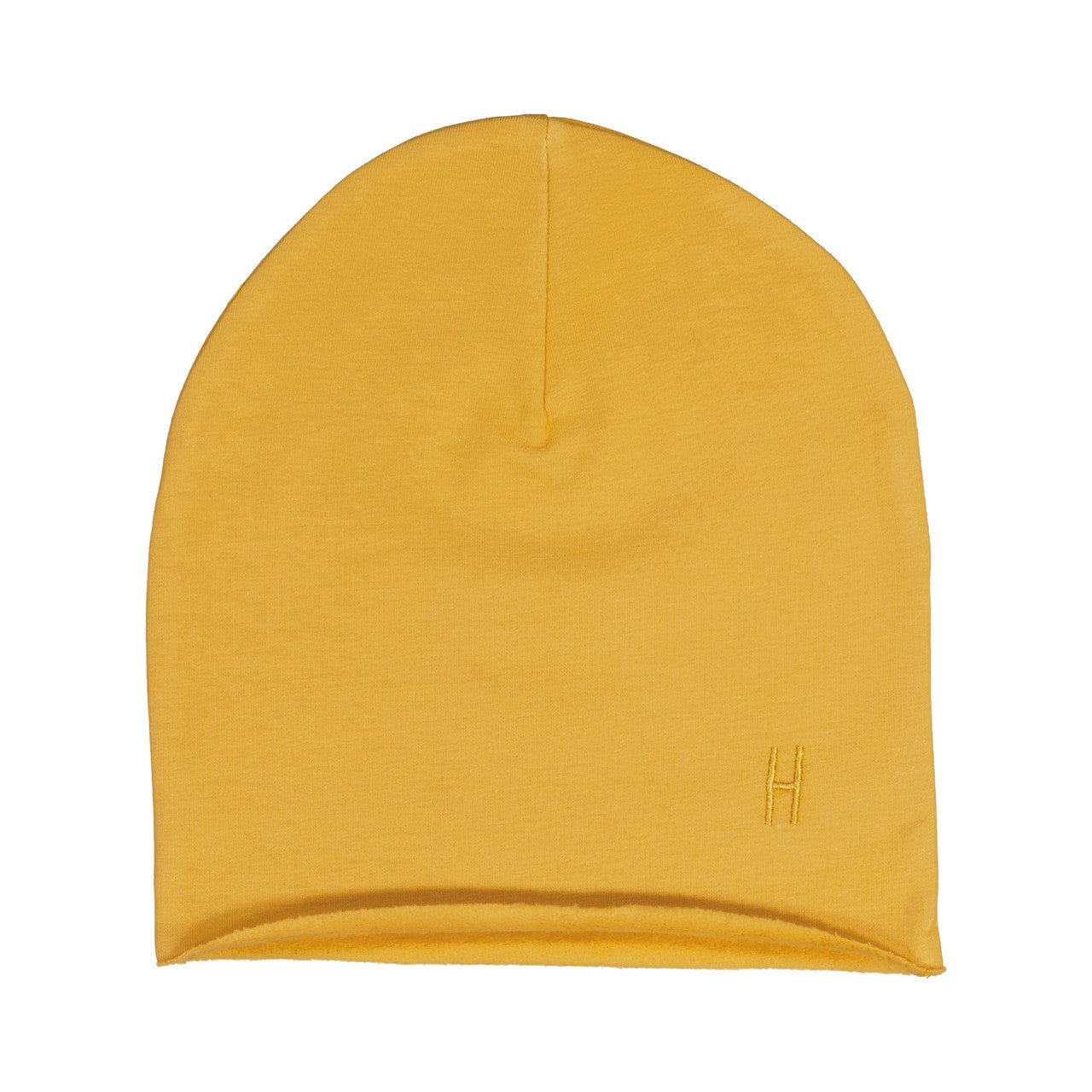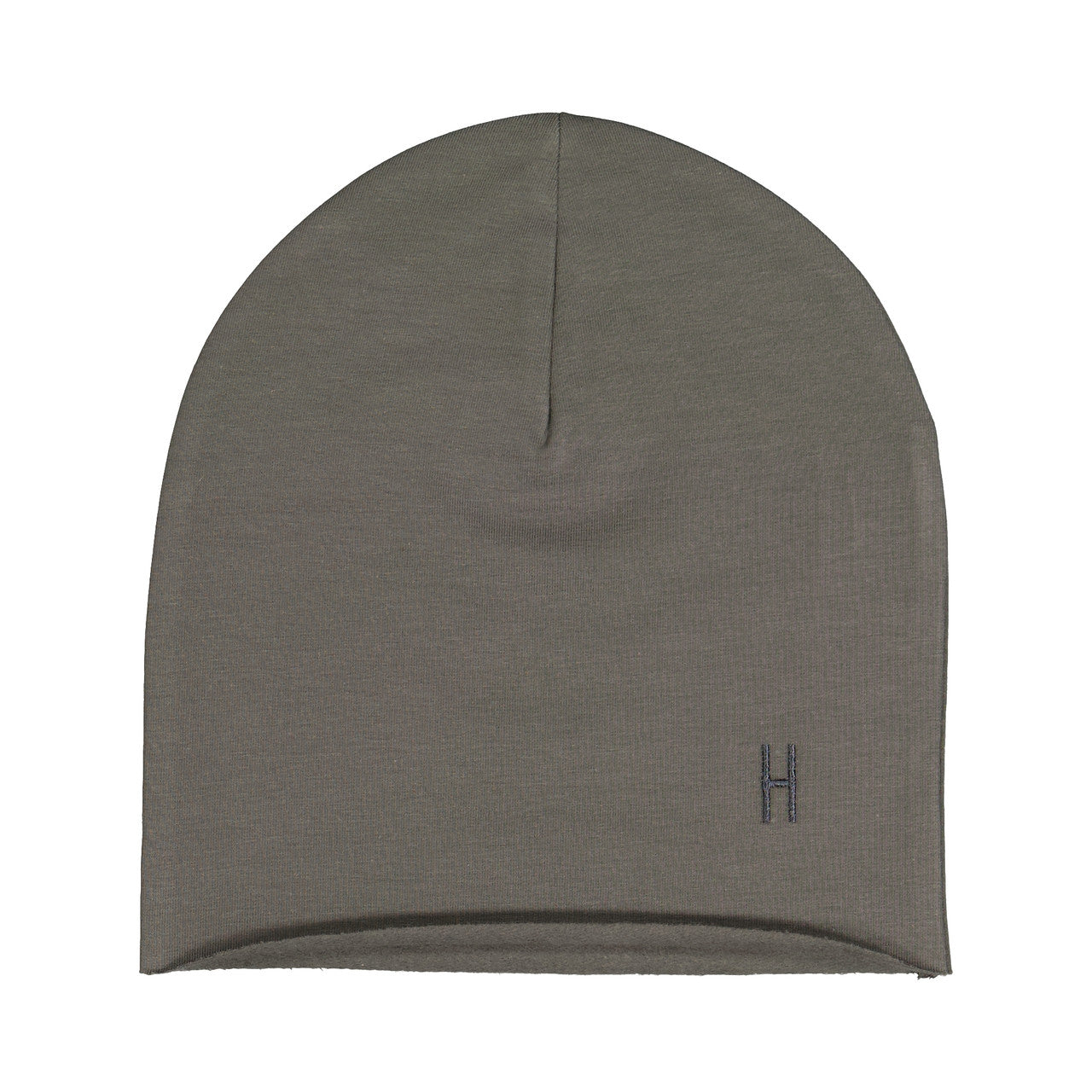Guide to the Softest Sweatpants: A Parent’s Guide to Comfort, Sustainability, and Safety
When it comes to finding the softest sweatpants for your child, comfort is key. But as a parent who also cares about sustainability and safety, it is important to ensure the clothing you choose isn’t just soft, but also eco-friendly, ethical, and safe for your child’s skin and health. This guide will walk you through everything you need to know about choosing the softest sweatpants that meet all your needs, from the best materials to look for, to understanding the importance of sustainability and safety in kids' clothing.
Table of Contents
- What Materials Make the Softest Sweatpants?
- What Makes Sweatpants Sustainable?
- What Makes Sweatpants Endocrine Safe?
- How to Care for Your Softest Sweatpants Sustainably
- Final Thoughts on the Softest Sweatpants for Your Child
What Materials Make the Softest Sweatpants?
The material used in sweatpants has the biggest impact on their softness. Choosing the right fabric will not only ensure your child is comfortable but will also help the pants last longer.
1. Organic Cotton
Organic cotton is widely regarded as one of the softest, most breathable, and comfortable materials available for kids' sweatpants. Unlike conventional cotton, organic cotton is grown without harmful pesticides and chemicals, making it a safer option for children’s delicate skin.
At Little Hedonist, all of our pants and sweatpants, with the exception of Winter Leggings CATO Tawny Port, are made of organic cotton. Our winter models are made with organic cotton that is brushed on the inside, for extra softness, comfort, and warmth.
- Why it's soft: Built with long threads, organic cotton is naturally soft and breathable, allowing for airflow that keeps your child cool.
- Why it's sustainable: It uses less water and avoids harmful pesticides, preserving soil quality and supporting eco-friendly farming. Look for GOTS and OEKO-Tex certifications.
2. Bamboo
Bamboo fabric is becoming increasingly popular in children’s clothing due to its soft, silky texture. It is a great alternative to cotton if you are looking for a material that feels luxurious while also being eco-friendly.
- Why it's soft: Bamboo fibers create a smooth, velvety feel that’s perfect for sensitive skin.
- Why it's sustainable: Bamboo fiber comes from the bamboo plant's sap, so no tree needs to be cut. Bamboo grows quickly and requires little water or pesticides, making it a renewable and sustainable resource.
3. Tencel (Lyocell)
Tencel, or Lyocell, is a natural fiber made from the wood pulp of trees like eucalyptus. It is incredibly soft and lightweight, making it a perfect choice for cozy kids' sweatpants.
- Why it's soft: Tencel has a silky-smooth texture that is softer than cotton and feels gentle against the skin.
- Why it's sustainable: It is produced in a closed-loop process, meaning the water and solvents used in manufacturing are recycled, reducing environmental impact.
4. Modal
Modal is another sustainable fabric option, made from beech tree pulp. It is often blended with other materials to enhance softness and durability. A luxury option, modal clothing usually carries a higher price tag.
- Why it's soft: Modal is extremely soft and has a silky finish, making it feel comfortable and luxurious.
- Why it's sustainable: Beech trees are fast-growing and require little water, making Modal a sustainable choice for eco-conscious parents.
5. Fleece (Made from Recycled Materials)
While traditional fleece is made from synthetic fibers, many brands now offer fleece made from recycled materials, like plastic bottles. This offers the same cozy softness while reducing plastic waste, though it remains a plastic-based (usually polyester) fiber.
Here at Little Hedonist, we have very few fleece products, however, as they are a kids' favorite and a great shield against the cold, all of our fleece is made from a blend of organic cotton and recycled polyester. None of our sweatpants are made of fleece, however, we prefer using brushed cotton, which mimics the feeling and warmth of fleece, but is made of organic cotton.
- Why it's soft: Fleece is known for being warm, soft, and lightweight.
- Why it's sustainable: Choosing fleece made from recycled materials helps reduce landfill waste and the demand for virgin synthetic fibers.
What Makes Sweatpants Sustainable?
Sustainability is an essential consideration for modern parents. But what exactly makes a pair of sweatpants sustainable? Here are some key factors:
Ethical Sourcing of Materials
Sustainably-produced sweatpants start with ethically sourced materials. This means choosing fabrics like organic cotton, bamboo, and Tencel that are farmed or produced in ways that do not deplete resources or harm the environment. Look for certifications such as GOTS (Global Organic Textile Standard) or OEKO-TEX, which guarantee that the material is sustainably and ethically produced, as well as free from harmful chemicals that could impact your child's health and development.
Fair Trade Practices
Sweatpants that are produced under fair trade practices ensure that workers involved in the farming, manufacturing, and sewing processes are paid fairly and work in safe conditions. Buying from brands that commit to fair trade practices helps support ethical labor standards worldwide.
Use of Recycled and Upcycled Materials
Using recycled materials in the production of sweatpants is another great way to reduce environmental impact. Recycled cotton or polyester (often found in fleece) repurposes existing materials, cutting down on the demand for new resources.
Low Impact Dyes
Many brands are now turning to low-impact, non-toxic dyes to color their fabrics. Traditional fabric dyes can be harmful to the environment, leaching toxic chemicals into water supplies. Low-impact dyes are designed to use less water and fewer chemicals, making them a more eco-friendly option.
Here at Little Hedonist, we only use fibers and dyes that are OEKO-Tex certified. They have been certified by an external agency to be free of harmful chemicals.
Durable and Long-Lasting
Finally, sustainability also means choosing clothes that last. Sweatpants made from high-quality materials are more durable, meaning they will withstand frequent washes and wear, reducing the need to replace them as often. Longer-lasting clothes also help reduce waste by keeping garments out of landfills.
What Makes Sweatpants Endocrine Safe?
As parents, we want to protect our children from harmful substances in their clothing, especially when it comes to chemicals that could disrupt their hormonal systems, known as endocrine disruptors. Here’s what to look for in endocrine-safe sweatpants:
1. Avoiding Harmful Chemicals
Certain chemicals used in fabric production can act as endocrine disruptors. These include phthalates, perfluorinated chemicals (PFCs), and bisphenols (BPA), which are sometimes used in the production of synthetic fabrics, water-resistant treatments, and plastic-based fibers.
- How to avoid them: Choose sweatpants made from natural, untreated materials like organic cotton, bamboo, or Tencel. Be wary of synthetic fabrics unless they are certified free from harmful chemicals.
2. Look for Certifications
Certifications like OEKO-TEX Standard 100 or GOTS ensure that the fabric used in clothing is free from harmful chemicals and safe for your child’s skin. These certifications require rigorous testing to ensure the fabric does not contain harmful substances, including endocrine-disrupting chemicals.
At Little Hedonist, all of our fibers and dyes are OEKO-Tex certified, and our organic cotton is GOTS-certified, grown and harvested in a European GOTS-certified cotton farm.
3. Flame Retardants and Water-Repellent Chemicals
Some clothing is treated with flame retardants or water-repellent chemicals that can disrupt hormones. Always check labels to ensure your sweatpants are free from these treatments or choose brands that clearly state they do not use harmful chemicals.
How to Care for Your Softest Sweatpants Sustainably
Once you have found the most sustainable, softest pair of sweatpants for your child, it is important to care for them properly to extend their lifespan and reduce your environmental impact.
Wash in Cold Water
Washing clothes in cold water helps to maintain the softness of natural fibers like cotton, bamboo, and Tencel, and it uses less energy than hot water cycles.
Use Eco-Friendly Detergents
Opt for eco-friendly detergents that are free from harsh chemicals. These detergents are gentler on both your child’s skin and the environment. Look for options that are biodegradable and come in recyclable packaging.
Line Dry When Possible
Drying clothes on a line or rack instead of in a dryer helps to preserve their softness and reduces the energy consumption of your household. Sunlight can naturally brighten fabrics as well.
Mend Before You Replace
Kids grow fast, and their clothes go through a lot of wear and tear. Instead of tossing out sweatpants at the first sign of damage, try to mend them. Patching holes or reinforcing worn areas helps to extend the life of the garment.
Final Thoughts on the Softest Sweatpants for Your Child
Choosing the softest sweatpants for your child doesn’t have to be complicated, especially when you know what materials to look for and how to prioritize sustainability and safety. Opting for fabrics like organic cotton, bamboo, Tencel, and recycled fleece ensures that your child is wrapped in comfort while you are making a responsible choice for the environment. Remember to look for endocrine-safe options by avoiding harmful chemicals and always choose sweatpants from brands that prioritize ethical labor practices and sustainable production.
By considering softness, sustainability, and safety, you are not only ensuring your child’s comfort but also contributing to a healthier planet and a safer future for all children.


